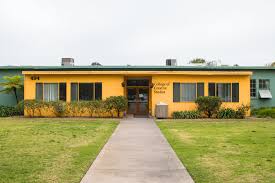On CCS

Spectrum's current Managing Editor Madeleine Almond shares her interpretation of UC Santa Barbara's College of Creative Studies.
Readers of Spectrum, upon opening the journal and reading “created by the College of Creative Studies at UCSB” will probably ask themselves, “What is the College of Creative Studies?” About half of UCSB doesn’t know. Those who do often give a shallow and unhelpful answer; “the smallest of three undergraduate colleges at UCSB.”
Physically, the College of Creative Studies is building 494 on campus. It was a temporary marine base assembled during World War II and never taken down. Originally, it was severe and proper and without character, but now the office building is painted sunshine yellow, the main building forest green, and the Little Old Theater--donated to the college by the theater department--is a subdued red. Approached from the side, one would mistake it for a small art building (the Sculpture yard takes up a large portion of free space), and from the front, the shock of color makes people stare.
Inside the CCS building is an eclectic and muddled space; an amalgamation of physics, math, computer science, biology, chemistry, art, music, and writing and literature all trying to coexist. These students are already involved in research or creating their own original work. All students at CCS are expected to produce something during their four years at the college. It’s an accelerated college for undergraduates taglined “The Graduate College for Undergraduates.”
On the walls, posters on quantum computing and cancer tissue compete for space with advertisements about musical performances, lectures, and numerous clubs. The bulletin boards are covered in flyers. The whiteboards in the lounge and classrooms are subject to the whims of the students; they adorn them with everything from cartoons to calls for submissions to lists of resources for food and tuition aid. In the hallway is the Train of Thought which has ceased to run due to breaks in the model tracks. A timeline of events leading up to and including the assent of the whole college into a higher state of existence in 2006 extends overhead. There is a computer lab with a printer named Apricot, a piano in room 143, and a small exhibition room that is filled with intense, strange artwork.
In the morning, the building houses the early risers: writing and literature students meeting to discuss prompts and read short stories; artists working tirelessly on their pieces. At night, late at night, the physics and math majors band together to lament their struggles against equations that no longer contain any numbers. The rooms with no whiteboards become refuges for biology and chemistry students memorizing chemical formulas. The Little Old Theater becomes the site of rowdy rehearsals for student-written musicals. Writing and Literature majors can occasionally be found here as well, utilizing the brain’s peculiar ability to enhance creativity as exhaustion increases.
The CCS Building is more alive than any other man made structure can be. It is never empty and never without motion. It’s this frenetic place that supplies its 400 students with the energy and guidance to take on the rest of their college careers.
But the true answer to the question “What is CCS?” is this: CCS is a college dedicated to allowing students to explore and create their own work and express their creativity. Since the founding of the college with its first major, Writing and Literature, these creative endeavors included the publication of a literary journal by the undergraduate students. Spectrum is still published by the Writing and Literature students today.